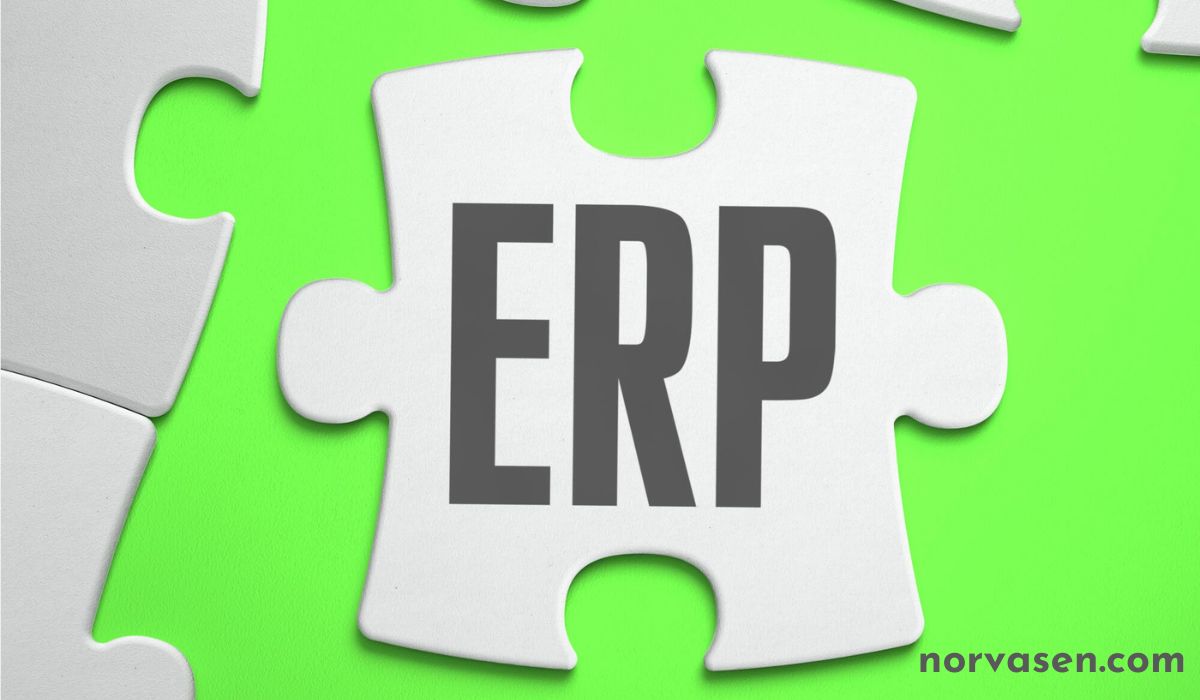Business
Understanding the Factors That Influence Commercial Property Appraisal Values

When understanding commercial property appraisals, many factors come into play. But what influences these valuations the most? In commercial real estate valuation, location, and physical attributes take the lead.
Yet, market conditions and income potential also have significant roles. This introduction aims to unravel the complexities of commercial property appraisal values. We will explore how each factor contributes to the assessment.
Knowing these can impact investment decisions. Ready to learn more about the nuances of real estate valuation? Let’s get started!
Location
The location of a property is vital. It decides the property’s accessibility and visibility. Prime locations attract more customers and firms.
It results in higher rental incomes and property values. Properties closer to city centers or business hubs are more sought after.
Accessibility to transport infrastructure also boosts a property’s appeal. Good road networks and public transport links are vital. They ensure ease of access for employees and clients.
Safe and secure neighborhoods are vital for firms. They contribute to a property’s desirability and worth. It adds the value of proximity to amenities like:
- banks
- cafes
- shops
A strategic location enhances a property’s potential for success. It makes the location a critical factor in the appraisal process.
Physical Attributes
Physical attributes affect a property’s value. The building’s age and condition are key factors. Newer buildings often demand higher prices.
They need less maintenance in the short term. Square footage also plays a crucial role in valuation. Larger spaces offer more utility and flexibility.
The quality of construction materials impacts durability and aesthetics. High-quality materials increase a property’s appeal and longevity. Energy-efficient features can reduce operational costs.
These features attract eco-conscious tenants. A well-designed layout enhances functionality and usability. It can cater to a broader range of businesses.
Modern amenities and facilities also increase a property’s desirability. They provide convenience and comfort to tenants. Physical attributes shape a property’s marketability and value.
Market Conditions
Market conditions play a crucial role in appraisal values. A commercial appraiser always considers the current economy. Economic health impacts property demand and value.
When the economy is strong, appraisals tend to be higher. Investors seek stability in real estate investments. Market trends influence commercial appraiser evaluations.
High demand for space pushes values up. It leads to lower appraisals. An appraiser assesses rent trends in the area.
Rising rents signal a strong market and higher property values. Interest rates are also a key factor for appraisers. Lower rates encourage investment and increase property values.
An appraiser tracks local business growth. New firms boost demand for commercial spaces.
An appraiser looks at future area developments. Planned infrastructure can enhance property values.
Income Potential
Income potential is a major factor in property appraisal. It reflects how much money the property can generate. High-income properties are more valuable to investors.
These include buildings with many rent-paying tenants. The type of lease also affects income potential. Long-term leases promise stable future income.
The property’s ability to attract tenants is crucial. Desirable locations and features improve tenant attraction. A property’s adaptability to different uses can also enhance value.
Versatile properties appeal to a broader range of tenants. The current income of the property is analyzed. It includes:
- rent rates
- occupancy levels
A property with high occupancy and rents is more valuable. Income potential impacts a property’s appraisal value. It gauges the financial return on investment for the property.
Environmental and Zoning Regulations
Environmental and zoning regulations influence property values. These laws control land use and ensure public safety. They can restrict property development possibilities.
It impacts the appraisal value of a property. Environmental laws protect natural resources and public health. Zoning regulations shape the urban landscape and business operations.
Properties compliant with these regulations are more valuable. Non-compliance can lead to fines and decreased value. Regulations vary from one location to another.
Investors must research local laws before buying property. These laws can change, affecting future property values. Adhering to regulations ensures long-term investment security.
These regulations are crucial for property appraisal. They define what can be built and where. It influences a property’s potential use and worth.
Technological Advancements
Technological advances impact property appraisals. They have changed how appraisal services operate. Smart buildings now influence property values.
These buildings offer advanced security and energy efficiency. It can make a property more appealing to investors. Technology also enables more accurate property value assessments.
Appraisal services use software to analyze market data. This results in faster and more precise valuations. Drones and 3D tours offer detailed property views.
They aid appraisal services in assessing a property’s condition. Tech improvements enhance the appeal of commercial spaces. They do so by adding innovative features and efficiencies.
Technology boosts a property’s income and value. Appraisal services are now more efficient and accurate. This benefits investors and the real estate market alike.
Future Development Plans
Future development plans can influence a property’s appraisal value. They signal growth and improvement in the area. Plans for new roads or transport links are impactful.
They improve access and can attract more businesses. New residential areas increase local customer bases. It boosts demand for commercial spaces.
Schools and public facilities also attract families and workers. More people in the area mean more business opportunities. Development plans can state a thriving future economy.
Investors watch these plans to gauge potential. Yet, construction can disrupt current business operations. It’s crucial to balance immediate drawbacks with future benefits.
Development plans show promise for property value increases. They are key for long-term investment strategies.
Learn More About a Commercial Property Appraisal
Commercial property appraisal involves complex factors. Every element plays a crucial role in valuation. From location to future developments, all impact appraisals.
An appraisal service must consider these varied aspects. Market conditions and income potential are key in these assessments. Physical attributes and technological advancements also matter.
Environmental and zoning rules impact values. Thus, understanding appraisal services is essential for investors.
These services help in making informed decisions. Property appraisal is critical in real estate investment.
Did you find this article helpful? If so, check out the rest of our site for more informative content.
Business
Trusted Commercial Fence Contractors for Your Property Needs

Securing your property means investing in quality fencing solutions. This is especially true in today’s competitive market.
Working with trusted commercial fence contractors is essential. This is whether you’re a business owner looking to enhance security or a property manager seeking aesthetic improvements.
This blog post will guide you through the process of finding reliable contractors. We’ll help you make the most informed choice for your property needs.
So, read on to learn more!
Do Your Research
Before choosing a commercial fence contractor, it’s crucial to do your research. This means looking into their experience, expertise, and past projects.
One way to start is by checking the company’s website. Here, you can find information on their services, client testimonials, and photos of previous work.
You can also check online review websites such as Yelp or Google My Business for ratings and reviews from other customers. This will provide insight into the contractor’s reputation and level of customer satisfaction.
Ask for Referrals
Word-of-mouth recommendations are another valuable resource when searching for reliable commercial fence contractors. Ask colleagues or business partners if they have worked with any reputable contractors in the past.
You can also reach out to other property owners or managers in your area for recommendations. This will not only help you find trusted contractors. It will also give you insight into pricing and project timelines.
Consider Credentials
When choosing a commercial fence contractor, it’s essential to consider their credentials. Make sure they are licensed, insured, and have all the necessary permits required for fencing projects in your area.
A reputable contractor should also be willing to provide references from previous clients and proof of completed projects similar to yours. This will give you peace of mind knowing that you’re working with qualified professionals. Whether you are up for roll-up garage doors or simply revamping your property’s fence, proper credentials are essential.
Get Multiple Quotes
It’s always a good idea to get multiple quotes from different commercial fence contractors before making a decision. This will not only give you an idea of the market price. It will also help you compare services and project timelines.
Be wary of extremely low quotes; they may be a red flag for subpar materials or workmanship. Remember, quality fencing solutions require proper investment. Whether you are going for clear garage doors or security fencing, always prioritize quality and reliability.
Communication is Key
When working with commercial fence contractors, communication is key. Make sure to communicate your expectations and ask any questions you may have regarding the project.
A reputable contractor should be transparent about their:
- process
- costs
- any potential delays or issues
This will ensure that both parties are on the same page throughout the entire process.
Hire the Right Commercial Fence Contractors
Securing your property with quality fencing solutions is essential to protect your business and enhance its appearance. Working with trusted commercial fence contractors is a crucial step in this process.
Investing in the right commercial fence contractor can provide long-term benefits for your property. So take the time to find the best fit for your needs and watch as your property’s security and aesthetics improve.
Should you wish to explore more reads, head to our blog page. We’ve got more!
Business
Streamlining Your Business with ERP Software to Optimize Efficiency

Streamlining your business can help you work better and faster. ERP software is a useful tool that helps companies manage their daily tasks in one place. By using this software, you can save time and reduce mistakes, making your business more efficient.
ERP stands for Enterprise Resource Planning, and it is a type of software that integrates multiple business processes into one system.
In this blog, we will explore how to streamline your business with ERP software to optimize efficiency.
Centralized Data Management
Centralized data management is key to running a successful business. By keeping all data in one place, employees can easily access information. This leads to faster decisions and fewer mistakes.
When companies use centralized systems, they can track everything better. This helps in sharing data across teams. As a result, optimized business operations become possible, boosting overall productivity and efficiency.
Automate Routine Tasks
Automating routine tasks is essential for saving time and reducing errors. With ERP software, businesses can set up processes to run automatically, like billing and reporting. This means employees have more time for important work that needs creativity.
Automated tasks help businesses run smoothly. When repetitive jobs are done by the software, mistakes go down. This leads to better efficiency and is a key part of ERP optimization that every company should consider.
Improve Inventory Management
Good inventory management is very important for any business. ERP software helps track inventory levels in real-time. This means you always know what you have in stock.
With better inventory management, you can avoid overstocking items. You can also make sure you do not run out of popular products. This leads to streamlined business processes and happier customers, as they can get what they need without delay.
Enhance Financial Reporting
An ERP system feature allows businesses to improve their financial reporting. It helps collect all financial data in one place. This means reports are more accurate and faster to create.
Better financial reporting helps businesses understand their money. Companies can see their profits and expenses clearly. This helps them make smart choices about spending and saving.
Foster Better Collaboration
Fostering better collaboration is key to a successful business. ERP software makes it easy for teams to share information. This helps everyone stay on the same page and work together smoothly.
With strong teamwork, projects get done faster. Using NetSuite optimization services can help improve communication. Better collaboration leads to satisfied employees and customers.
Streamline Supply Chain Operations
Streamlining supply chain operations is important for every business. ERP software helps manage all parts of the supply chain in one system. This means you can track orders, shipments, and suppliers easily.
When the supply chain runs well, businesses save time and money. With clear information, companies can spot problems early. Happy customers get their products on time, which helps grow the business.
Wrapping Up: Key Steps to Optimize Efficiency
Using ERP software is a smart choice. It helps businesses manage tasks better and find new ways to optimize efficiency. By focusing on centralization, automation, and better collaboration, you can enhance your operations.
Effective inventory management and financial reporting lead to clearer insights. These insights help in making good business decisions. When teams work together, everyone benefits.
By streamlining supply chain operations, you can improve service for your customers.
Did this article help you? If so, take a look at some of our other blog posts for more informative reads.
Business
Best Poshmark Sharing Bot vs. Manual Sharing

Introduction
Sharing items on Poshmark is a vital activity for sellers to increase the visibility of their listings and drive sales. Sellers have two main options: using a Poshmark sharing bot or manually sharing their listings. In this post, we’ll compare these two methods to help you decide which is best for your Poshmark business.
What is a Poshmark Sharing Bot?
A Poshmark sharing bot is a software application designed to automate the process of sharing items in your Poshmark closet. These bots can perform a variety of tasks, such as sharing your listings, following other users, and sharing items to Poshmark parties. They work by simulating the actions you would normally perform manually, thus saving you time and effort.
Manual Sharing on Poshmark
Manual sharing involves personally handling all the tasks required to maintain an active Poshmark presence. This includes sharing your items multiple times a day, following new users, and participating in Poshmark parties. While manual sharing gives you full control over the process, it can be incredibly time-consuming and tiring.
Pros and Cons of Using a Sharing Bot
Advantages:
- Time-Saving: Sharing bots handle repetitive tasks, freeing up your time for other important activities.
- Consistent Activity: Bots can share your items at regular intervals, ensuring your closet remains active and visible.
- Increased Engagement: By automating interactions, sharing bots can help you gain more followers and potential buyers.
Potential Drawbacks:
- Cost: While many sharing bots offer free trials, premium features often come with a subscription fee.
- Risk of Account Suspension: Poshmark’s terms of service discourage automation. Using bots can potentially lead to account suspension if detected.
Pros and Cons of Manual Sharing
Advantages:
- Full Control: Manual sharing allows you to personally manage all interactions, ensuring a personalized touch.
- Compliance: There is no risk of violating Poshmark’s terms of service, as you are performing all tasks manually.
Potential Drawbacks:
- Time-Consuming: Sharing items manually multiple times a day can be very time-consuming.
- Physical Strain: The repetitive nature of manual sharing can lead to physical strain, especially if you have a large closet.
Conclusion
Both sharing bots and manual sharing have their advantages and disadvantages. If you’re looking to save time and maintain a consistent presence on Poshmark, a sharing bot might be the right choice for you. However, if you prefer full control and want to avoid any potential risks, manual sharing is a safer option. Ultimately, the best choice depends on your individual needs and preferences.
For more information on automating your Poshmark closet and boosting your sales, explore the features offered by this Poshmark automation tool.
-

 Tech5 months ago
Tech5 months agoExploring the Features of Innocams: The Future of Security
-

 Home Improvement3 months ago
Home Improvement3 months agoEco-Friendly Round Rug Options for Sustainable Living in NZ
-

 How-To Guides2 months ago
How-To Guides2 months agoComprehensive Guide to Cockwarming: Enhancing Intimacy and Connection
-

 Fashion3 months ago
Fashion3 months agoBlack Magic: The Elegance and Sophistication of Ultimate Homecoming Dresses in Black
-

 Apps and Games3 months ago
Apps and Games3 months agoDiscover Tickzoo: The Ultimate Platform for Video Content Lovers and Creators
-

 Business5 months ago
Business5 months agoUnlock Potential: Explore Pikruos Services
-

 Blog3 weeks ago
Blog3 weeks agoPossiblyethereal: Exploring the Ethereal Unveiling Abstract Ideas
-

 Entertainment4 months ago
Entertainment4 months agoDiving into the Audio-Visual Experience with AV Tub: Innovating Our World of Media
















